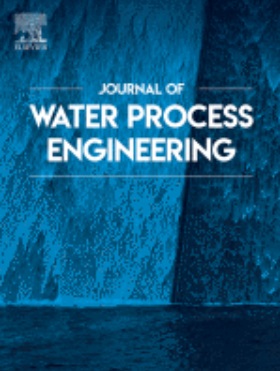Isomorphic substitution of zeolite and zeotype materials plays a dominant role in tuning the performance of the materials in adsorption and catalysis. Here, aluminophosphate AlPO
4-5 crystals (AFI-type) with variable content of incorporated iron or magnesium were hydrothermally synthesized, characterized, and tested for water adsorption. The metal incorporation altered the growth direction and thus morphology of the resulting crystals, while the Al/P ratio decreased below unity with increasing Fe/Al
2O
3 or Mg/Al
2O
3, confirming selective substitution of aluminum. Moreover, the unit cell experienced shrinkage when Fe substituted Al, whereas the MgAPO-5 lattice refinement results revealed minor variation in the
lattice parameters. Water vapor adsorption studies revealed that the materials exhibit non-typical, type-V adsorption behavior with initial low uptake, indicating
hydrophobicity, followed by a steep capacity increase indicating capillary-like adsorption at higher relative pressures. Metal substitution could tune the behavior, i.e. by increasing hydrophilicity at the lower range of relative pressures, with the onset of the
inflection point being shifted to lower
P/P0 values with increasing metal content. An Fe-based AlPO
4-5 yielded the highest absorption capacity among all adsorbents tested (13 mmol/g at 43 °C). Fowler-Guggenheim calculations showed that the interaction energy (
ω) between the adsorbed water molecules was positive for both MgAPO-5 and FeAPO-5 indicating attractive intermolecular interactions, yet a decrease of
ω with increasing Me/Al
2O
3 ratio in the synthesis mixture revealed suppression of intermolecular interactions with metal loading. The reported results and the tailoring of water adsorption behavior by metal substitution can be promising for water sorption/separation applications such as atmospheric water harvesting.



